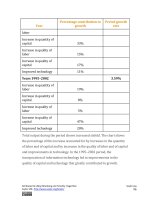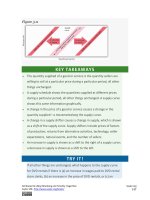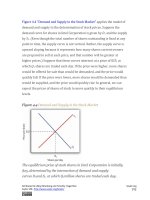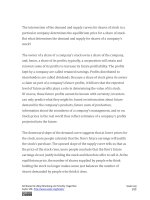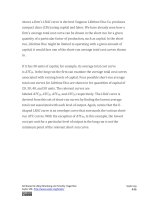Authors libby rittenberg 776
Bạn đang xem bản rút gọn của tài liệu. Xem và tải ngay bản đầy đủ của tài liệu tại đây (320.95 KB, 1 trang )
4. David Letterman earns more than $10 million per year from CBS. Why
do you suppose he earns so much? Is there any reason to believe he is
underpaid?
5. Suppose a union obtains a union shop agreement with firms in a
particular industry. Is there any limit to the wages the union can
achieve for its workers?
6. It is illegal for firms in most industries to join together in a producers’
cooperative. Yet such arrangements are common in agriculture. Why?
7. In proposing an increase in the minimum wage in 2005, the
Democratic Party argued that in some markets, a higher minimum
wage could actually increase employment for unskilled workers. How
could this happen?
8. In 2005–06 the maximum salary of professional basketball players
with up to three years of experience in the Women’s National
Basketball Association (WNBA) stood at $42,000, while the maximum
salary for a WNBA player in 2005 was $90,000 (the average was
somewhere between $46,000 and $60,000 (depending on whether
one’s source was the Players Union or the WNBA league itself). The
minimum salary of a (male) rookie professional NBA basketball player
in 2005–06 was $398,762 (WNBA rookies earned only slightly more
than $30,000 that year). The average NBA salary in 2005–06 was
$4,037,899. Why was there such a large discrepancy?
9. The Case in Point on professional sports suggests that most
professional athletes now receive salaries equal to their marginal
revenue products. These are typically quite high. Are such high
salaries fair? Why or why not?
10. The Case in Point on the airline industry suggested that unions can
enhance airline profitability and productivity. How is this possible?
Attributed to Libby Rittenberg and Timothy Tregarthen
Saylor URL: />
Saylor.org
776
